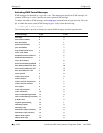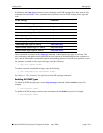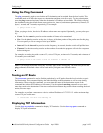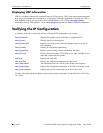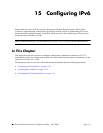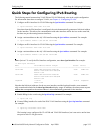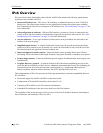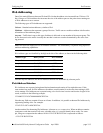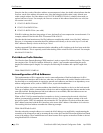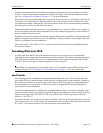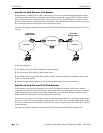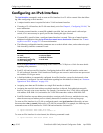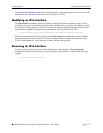
IPv6 Overview Configuring IPv6
page 15-4 OmniSwitch 6600 Family Network Configuration Guide April 2006
IPv6 Overview
IPv6 provides the basic functionality that is offered with IPv4 but includes the following enhancements
and features not available with IPv4:
• Increased IP address size—IPv6 uses a 128-bit address, a substantial increase over the 32-bit IPv4
address size. Providing a larger address size also significantly increases the address space available,
thus eliminating the concern over running out of IP addresses. See “IPv6 Addressing” on page 15-5 for
more information.
• Autoconfiguration of addresses—When an IPv6 interface is created or a device is connected to the
switch, an IPv6 link-local address is automatically assigned for the interface and/or device. See “Auto-
configuration of IPv6 Addresses” on page 15-6 for more information.
• Anycast addresses—A new type of address. Packets sent to an anycast address are delivered to one
member of the anycast group.
• Simplified header format—A simpler IPv6 header format is used to keep the processing and band-
width cost of IPv6 packets as low as possible. As a result, the IPv6 header is only twice the size of the
IPv4 header despite the significant increase in address size.
• Improved support for header options—Improved header option encoding allows more efficient
forwarding, fewer restrictions on the length of options, and greater flexibility to introduce new options.
• Security improvements—Extension definitions provide support for authentication, data integrity, and
confidentiality.
• Neighbor Discovery protocol—A protocol defined for IPv6 that detects neighboring devices on the
same link and the availability of those devices. Additional information that is useful for facilitating the
interaction between devices on the same link is also detected (e.g., neighboring address prefixes,
address resolution, duplicate address detection, link MTU and hop limit values, etc.).
This implementation of IPv6 also provides the following mechanisms to maintain compatibility between
IPv4 and IPv6:
• Dual-stack support for both IPv4 and IPv6 on the same switch.
• Configuration of IPv6 and IPv4 interfaces on the same VLAN.
• Tunneling of IPv6 traffic over an IPv4 network infrastructure.
• Embedded IPv4 addresses in the four lower-order bits of the IPv6 address.
The remainder of this section provides a brief overview of the new IPv6 address notation, autoconfigura-
tion of addresses, and tunneling of IPv6 over IPv4.



